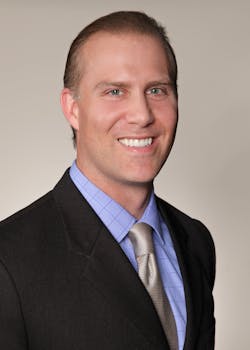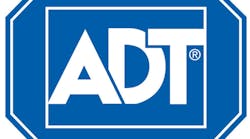Legal Brief: A Closer Look at the ADT-Lyft Partnership

I have had the privilege to travel the world, and in my travels, I have taken various modes of transportation, including many taxi cabs and, in recent years, ride sharing services like Uber and Lyft.
I have always thought it odd that humans are willing to jump in a car with a complete stranger behind the wheel. Thankfully, I can only remember one time where, while traveling in a cab, I felt so unsafe that I demanded the driver stop and let me out of the car.
What if he did not stop? What if I was in genuine jeopardy? What would I have done? Who would help? In the age of cell phones, this dynamic has changed for the better. People have greater and more immediate access to help in these types of circumstances, which is good; however, not every circumstance permits a phone call for help or justifies immediately calling 911.
Recently, on Oct. 14, ride-sharing company Lyft announced a partnership with ADT to address these very concerns. “Lyft and ADT plan to develop new features designed to give riders and drivers peace of mind and enhance the safety of the Lyft platform,” the press release says.
The first step in the partnership will be a safety feature pilot, scheduled to begin in early 2020 in approximately nine markets with the potential to implement nationally to Lyft’s 30 million riders and 2 million drivers.
As detailed in the press release, “in an emergency, Lyft users will be able to signal to ADT that they are in need of assistance, via an ADT-powered feature in the Lyft app. A user will then be connected to one of ADT’s owned and operated monitoring centers, where an ADT security professional will alert authorities as needed so they can arrive at the user's location, equipped with detailed incident information.”
The ADT feature in the Lyft app enables riders who feel unsafe to initiate a voice call or discreet SMS chat with an ADT operator. This feature is in addition to the existing capability of the Lyft app to initiate in-app access to 911.
Unintended Consequences?
I applaud both of these companies for working together to make ride-sharing a safer experience for everyone; nevertheless, questions remain.
The feature is essentially a mobile panic button. It must be triggered purposely, by a person, with intent to solicit help. I presume that users of this feature will choose to use it, instead of the in-app 911 feature, because they are in a dangerous circumstance where they do not want to alert the bad guy (a driver, a passenger or some other wrongdoer) to the fact that the user is seeking help. Also, perhaps they will benefit from the assistance of a trained security professional who can gather data generated by the user and his/her device. This is all good.
However, by industry standard, panic buttons are supposed to yield an immediate police dispatch (except, perhaps, in rare circumstances). What will be interesting here is whether this feature in the Lyft app will be treated like a panic button for monitoring purposes. This is a wonderful tool for potential victims, but also may tax law enforcement beyond capacity.
Will the ADT monitoring operator immediately seek a dispatch of first responders? Will the operator have discretion? How much? Will law enforcement give these alarms priority response? Will there be a proliferation of alarms through these apps? What will be done to mitigate false alarms?
Legally, what will the liability issues be for ADT and, separately, for Lyft? Will ADT be protected, contractually or otherwise, against claims by the end user of Lyft’s app? What types of protections will extend to ADT?
ADT and Lyft may have answers to these questions...if not now, then in time. There is an abundance of opportunity to do good here, but also many open legal, logistical and technological questions. Let’s hope all such questions are resolved in favor of the success of this program.
Timothy J. Pastore, Esq., is a Partner in the New York office of Montgomery McCracken Walker & Rhoads LLP (www.mmwr.com), where he is Vice-Chair of the Litigation Department. Before entering private practice, Mr. Pastore was an officer and Judge Advocate General (JAG) in the U.S. Air Force and a Special Assistant U.S. Attorney with the U.S. Department of Justice. Reach him at (212) 551-7707 or by e-mail at [email protected].

Timothy J. Pastore, Esq.
Timothy J. Pastore Esq., is a Partner in the New York office of Montgomery McCracken Walker & Rhoads LLP (www.mmwr.com), where he is Vice-Chair of the Litigation Department. Before entering private practice, he was an officer and Judge Advocate General (JAG) in the U.S. Air Force and Attorney with the DOJ. [email protected] • (212) 551-7707
Meet Timothy J. Pastore
Timothy J. Pastore, Esq., is the newest columnist to join the Security Business magazine family. He is a Partner in the New York office of Montgomery McCracken Walker & Rhoads LLP (www.mmwr.com), where he is Vice-Chair of the Litigation Department.
Before entering private practice, Mr. Pastore was an officer and Judge Advocate General (JAG) in the U.S. Air Force and a Special Assistant U.S. Attorney with the U.S. Department of Justice. As a JAG, in particular, Mr. Pastore was legal counsel to the Air Force Security Forces and Air Force Office of Special Investigations.
Mr. Pastore has represented some of the largest companies in the security industry, including Protection One, Comcast, Charter, Cox, Altice, Mediacom, IASG, CMS and others. He regularly provides counsel on risk management, contracting, operations, licensing, sales practices, etc. Mr. Pastore also has served as lead counsel in courts throughout the country in dozens of litigation matters involving the security industry.
Among other examples, Mr. Pastore led the successful defense at trial of cable giant Comcast in a home invasion case in Seattle, Washington. The case received significant press attention and was heralded by CVN as a top-ten defense verdict.
Mr. Pastore is a graduate of Bucknell University and Boston College Law School.
Reach him at (212) 551-7707 or by e-mail at [email protected].




